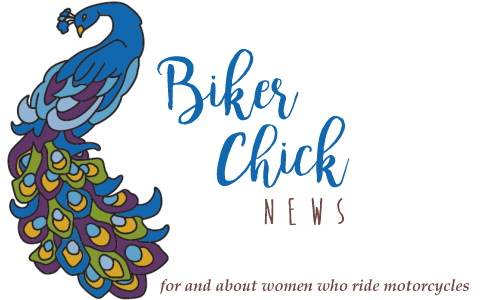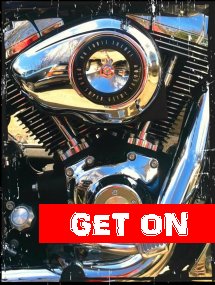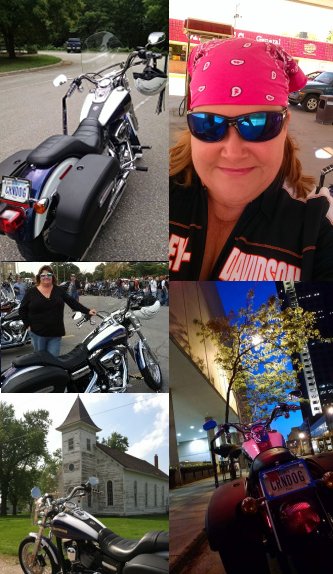How to properly fit a pair of chaps
by Corn Dog on July 15, 2010
in Commentary
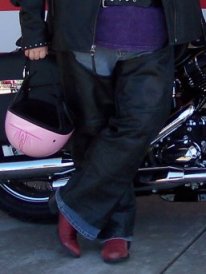 I love chaps. Actually I should amend that to say, I love chaps on other people. On normal people, chaps contribute to that long and lean, bad-ass biker look that kinda turns me on. Plus, of course, they have wonderful protective qualities that will quite literally save your skin if you go down. On me, however, because I am so short and round, they generally look like someone has put chaps on the Michelin Man. (I sure love them on me for warmth – and those protective qualities – regardless of how silly they look!)
I love chaps. Actually I should amend that to say, I love chaps on other people. On normal people, chaps contribute to that long and lean, bad-ass biker look that kinda turns me on. Plus, of course, they have wonderful protective qualities that will quite literally save your skin if you go down. On me, however, because I am so short and round, they generally look like someone has put chaps on the Michelin Man. (I sure love them on me for warmth – and those protective qualities – regardless of how silly they look!)
A few years ago I did a short piece on the blog about the history of chaps. Then recently I connected via email with a biker leather shop in western Iowa called Leather & Hawgs, and thought that perhaps they would be good folks to offer up some tips on how to properly fit a pair of chaps.
Owner Greg “Leatherman” Crook was kind enough to provide me with the following tips for fitting and buying the “shotgun style” most commonly worn by bikers:
- When you purchase your chaps the most important thing is to get a chap which fits very snug on your thighs, because over time they will stretch. Once you have the chaps on, you can put your hand between your jeans and the chaps; this is about how much the chaps will stretch once they are broken in.
- If you have a larger waist, it’s tempting to get bigger chaps; unfortunately, if you do this you may find that the legs are much too big even before they stretch out. Buy the chaps that fit snug around your thighs; expand the waist if need be by using an extender, and overlap the grommets on the back of the chaps if you are small-waisted and need to bring the waist in.
- When measuring the length you should have on the boots you wear on your bike. To get the proper length, stand up straight and look ahead, and have someone measure the length to the bottom of your heel, plus half an inch to allow for the chaps to pull up when you are sitting on the bike.
Oh, and just in case it’s not clear, the above represent POORLY-fitted chaps. They’re mine, and I bought them, before I learned these tips, to fit my waist rather than my thighs. They’re also too short, even for me.
Preparing your teen to ride
by Corn Dog on June 28, 2010
in Other Biker Chicks
Corn Dog’s Note: Wanted to share this excellent article with you by Jordan Robertson, a freelance writer, long-time rider and concerned Mom. Be sure to add your thoughts about what make good “ground rules” for teens interested in riding, and a big THANK YOU to Jordan for offering her insights to Biker Chick News!
Preparing Your Teen to Ride
by Jordan Robertson
 If you’re a motorcycle enthusiast, chances are your kids will be too. They’ve grown up watching you ride, maybe helping you wash it in the driveway, dreaming of the day when they’d be able to take it out for a spin themselves. As a rider, you know better than anyone the joys of zipping down the road, feeling the bike between your knees and the feeling of freedom it offers. But you also know the dangers involved, especially when the rider is uneducated and unprepared. You’ve been an experienced rider for so long now, you may have forgotten some of the basics for someone just starting out.
If you’re a motorcycle enthusiast, chances are your kids will be too. They’ve grown up watching you ride, maybe helping you wash it in the driveway, dreaming of the day when they’d be able to take it out for a spin themselves. As a rider, you know better than anyone the joys of zipping down the road, feeling the bike between your knees and the feeling of freedom it offers. But you also know the dangers involved, especially when the rider is uneducated and unprepared. You’ve been an experienced rider for so long now, you may have forgotten some of the basics for someone just starting out.
My son has been saving up and recently bought his first bike, but I won’t let him get on that bike until I’ve helped him learn how to do it the right way. Here are just a few of the things your teen will need to do in order to be a safe, responsible rider:
Take a Motorcycle Safety Course
Sure, you know everything there is to know about riding. You’ve been doing it for years. But you probably also know some shortcuts, and have your own little ways of doing things that may be a little, let’s just say, unorthodox. Before you pass those on to your teenager, insist that he learn to ride the right way, taught by an experienced instructor.
Learning anything in a structured, classroom environment brings out the student in all of us. A teenager will be more likely to listen and pay attention to the instructor than to his parent who tells him what to do every day. The goal of earning that certificate at the end, and getting that feeling of accomplishment will motivate him to learn and participate.
Besides, by completing a safety course, my son is eligible for a discount on motorcycle insurance. That alone is reason enough to attend.
Wear a Helmet
Statistics show that head and chest injuries are the most common injuries suffered in motorcycle accidents. A helmet is the easiest way to prevent severe head injuries, or even death. If you require your kid to buckle his seatbelt when he’s in the car, require him to wear a helmet on the bike. It will give you peace of mind while protecting him from motorcycle injuries.
Not all states require that helmets be worn, and I know many people who think it’s not necessary, or that it just gets in the way. But this is my kid we’re talking about, and my concern for his safety trumps any state law. Once he’s an adult, it will be up to him whether or not he wears a helmet. But for now — no helmet, no motorcycle.
Get Insurance
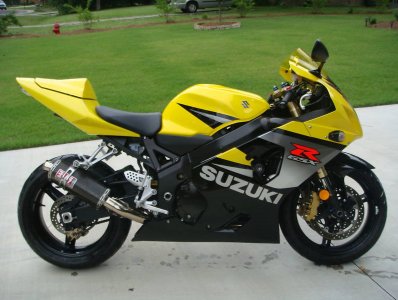 One of the best ways to help teenagers appreciate something they have is to make them pay for it themselves. Too often, parents buy everything for their kids, denying them the opportunity to learn the true value of their possessions. When a child has to earn and then spend their own money on something, whether it’s clothes or a vehicle, they’re much more likely to take care of it and use it responsibly.
One of the best ways to help teenagers appreciate something they have is to make them pay for it themselves. Too often, parents buy everything for their kids, denying them the opportunity to learn the true value of their possessions. When a child has to earn and then spend their own money on something, whether it’s clothes or a vehicle, they’re much more likely to take care of it and use it responsibly.
I am requiring my son to pay for his own insurance, which is also a way to teach him about an important part of personal finances. He’ll eventually be paying for life and health insurance in addition to his vehicle insurance. I’m using this time to help him understand how it works and why it’s necessary, and to also make sure he understands how premiums can go up if he gets a ticket or is involved in an accident. The more careful and responsible he is on the road, the more money he’ll be saving, not to mention the safer he and everyone else on the road will be.
Ride Responsibly
Even after taking a motorcycle safety course, and being lectured about the dangers of irresponsible riding, your kid is still a teenager, and prone to making mistakes. There may come a time when he gets a ticket for speeding, or worse, participates in road racing or other dangerous activities on the motorcycle.
Before he rides that bike for the first time, I will have a discussion about what is and is not allowed on the motorcycle, and what I will and will not tolerate. He needs to understand there are consequences for inappropriate actions, one of which may be losing the motorcycle altogether.
Hold your teen accountable for his behavior and actions. It may seem harsh, but remember that stunt riding, or even just speeding on a busy road or in a residential area doesn’t just put your kid in danger. By doing those things, he’s also putting others in danger.
By preparing my son for the responsibility of owning and riding a motorcycle, I believe I am helping him become a more responsible person in all areas of his life. With a little trust, a lot of patience, and even more preparation, I’m hoping that someday soon we will be able to ride together.
Tips for car drivers on sharing the road
by Corn Dog on May 20, 2010
in Riding Tips
Hat tip to Rippin-Kitten for the alert on this link!
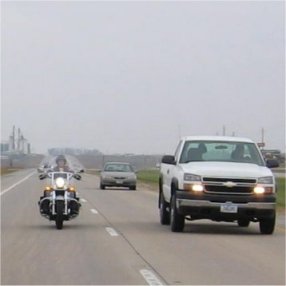 Here’s a link you can share with the cagers in your life – information from the Motorcycle Safety Foundation (MSF) on sharing the road with motorcycles, found on their new website www.forcardrivers.com
Here’s a link you can share with the cagers in your life – information from the Motorcycle Safety Foundation (MSF) on sharing the road with motorcycles, found on their new website www.forcardrivers.com
I don’t know about you, but riding a motorcycle has actually made me a better driver overall: I am more watchful, less likely to take up a distraction like talking on the phone, and I make a conscious effort to look for bikes year-round (because you never know when we’ll get a nice day in January!).
I do think, though, that most drivers forget over time whatever information they may have been given during Driver’s Ed regarding motorcycles. That’s why the MSF site is a good one, especially the Quick Tips page.
All the tips are good, but this one strikes me as something a long-time cager might “forget” over time:
Motorcyclists often adjust position within a lane to be seen more easily and to minimize the effects of road debris, passing vehicles, and wind. Understand that motorcyclists adjust lane position for a purpose, not to be reckless or show off or to allow you to share the lane with them.
I’ve had direct personal experience with drivers crowding me, or members of my merry band – in fact, last time our daughter joined us for a ride on her dad’s bike, some asshole scared her to death by following way too closely and way too aggressively. And I thought, “Are you serious? You would risk killing a dad and his daughter because you thought we were going too slow? DO YOU NOT SEE THE SLOW-MOVING CAR WE ARE ALL FOLLOWING??” (There was more to this thought-stream, but I’ll spare you the details.)
I’ll have more soon on another of the tips (the one about motorcycles and their stopping distance) – but for now, just wanted you to be sure to check out the site and use the comment section below to offer your “share the road” tips and stories.
Ride outside your comfort zone
by Corn Dog on January 16, 2010
in Beginning Riders
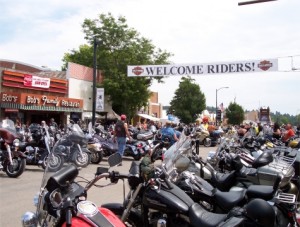 One of the bits of wisdom new riders hear a lot (even from me!) is, “don’t let anyone push you to ride outside your comfort zone.” That means you shouldn’t feel obligated to do something on the bike you’re not ready to do, and it’s usually good advice.
One of the bits of wisdom new riders hear a lot (even from me!) is, “don’t let anyone push you to ride outside your comfort zone.” That means you shouldn’t feel obligated to do something on the bike you’re not ready to do, and it’s usually good advice.
But here’s the thing about your comfort zone: it is and was intended to be a moving target! It changes constantly as you develop new skills. So don’t let complacency get in the way of your progress. After all, you’ve taken the biggest step already – just getting on the bike and learning to make it move. Some of the tasks that seem most daunting are easily within your reach – and believe me, you’ll soon wonder why you ever let anything hold you back.
Ride a road with a higher speed limit! Pick a road that leads you out of town, gradually increase your speed, and enjoy the sights and smells of the roads beyond your doorstep. Enjoy the feel of the bike on the curves… take in the vista on the straight-aways… feel the connection to your bike and to your surroundings like you never have before.
Ride at night! Riding at night poses special challenges – make sure you’re as visible as you can be, be extra-aware of traffic movements around you, and if feasible, ride with your bright headlights out on the rural roads so you get a wider swath of light with which to spot animals or other potential hazards. Consider your bodily comfort, too – have a jacket you can don if needed, and wear clear glasses to protect your eyes.
Conquer the freeway entrance ramp! It can be nerve-wracking, especially if your local cagers don’t seem to give an inch when it comes to merging (ahem – IOWA!!). But trust me, it gets less nerve-wracking with practice.
Take a weekend trip! Yes, yes, I know you’re busy and you have obligations. But really – just do it. Pick a spot in your region you’d like to visit… plan your route (part of the fun!)… and go! You can leave on Saturday, return on Sunday – or whatever days work for you. You’ll return home refreshed and eager to do it again, guaranteed!
Think of it this way: if you never ride outside your comfort zone, you’ll never leave your own neighborhood. And that’s probably not what you envisioned when you decided to learn to ride. So go for it!
This blog is full of reports of my many milestones – share YOUR accomplishments in the comments!
Good tips for ride leaders
by Corn Dog on January 8, 2010
in Riding Tips
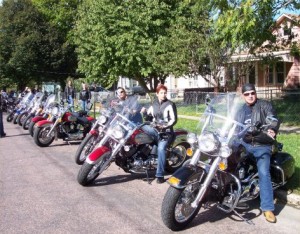 Jay’s got a strong list of tips for road captains over at Road Captain USA, and, although I’m not a sanctioned road captain I’ve led a lot of rides so thought I’d make some additions here instead of whole-posting in his comments section. (Jay, hope you don’t mind the link!)
Jay’s got a strong list of tips for road captains over at Road Captain USA, and, although I’m not a sanctioned road captain I’ve led a lot of rides so thought I’d make some additions here instead of whole-posting in his comments section. (Jay, hope you don’t mind the link!)
Most notably, two things:
First, there’s another reason to park away from the front door of the convenience store – when you get a little farther away from the entrance, you likely have more room for all the bikes in the group. You then have a better chance of getting parked in some kind of group or even loose formation for making an organized exit.
Second, I disagree that the group leader should “ride their own ride.” The group leader has to ride within their own skillset and comfort zone, for sure. But part of being the leader is keeping track of the rest of the group. and that’s not possible if you just focus on your own ride. That’s not to say the leader shouldn’t have the opportunity to enjoy the ride. But it’s important to know what’s going on with the rest of the group. I think the key is really just to find the middle ground.
Beyond these, here are a couple “tips” of my own – well, not really tips, just things I try to do when leading a group that I think make it more enjoyable.
1. I don’t abandon people just because we’ve reached the destination. I know it’s “policy” in some sanctioned riding groups that the ride ends the moment you arrive, and certainly in larger groups that’s because people want to be free to head home as meets their needs. For the kind of small-group rides I’m usually leading, it just feels like common courtesy to lead the ride home too.
2. I try to pick destinations that have food and something interesting to see. Of course, the day is mostly about the ride itself. But it’s nice to have something to explore, if even for a short time, to give everyone a break. As for the food – the logic of that just goes without saying.
If you find yourself leading rides, what are your tips? If you tend to follow, what do good leaders do that make the ride more enjoyable?
